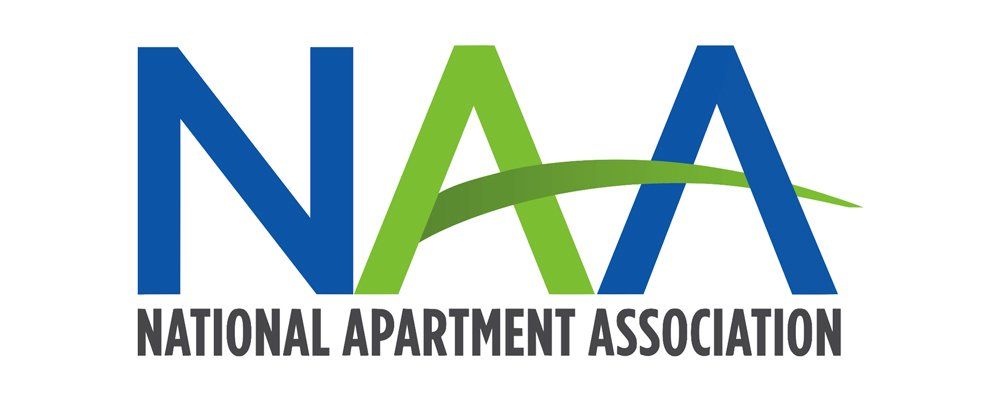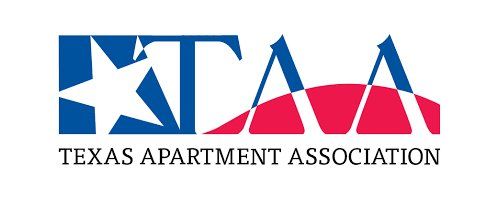Blog & News
Boosting Property Value with Fiber Internet Installation for MDUs: 2024 Guide
Home » Blog » Bulk Internet Services » Fiber internet installation for MDUs
Table of Contents:
- Introduction to Fiber Internet for MDUs
- Planning and Preparation
- The Installation Process
- After Installation: Activation and Testing
- Maintenance and Upgrades
Introduction to Fiber Internet for MDUs
Fiber internet is like a super-fast highway for internet data, making everything online quicker and smoother. Imagine being able to download your favorite movie in seconds or having video chats without annoying delays. For apartment buildings or condos, which we call Multi-Dwelling Units (MDUs), upgrading to fiber internet is a game changer. It not only makes residents happy but can also increase the value of the property. This article will dive into what fiber internet is, why it's a big deal for MDUs, and give you a bird's-eye view of how it's installed. It's like laying down new, state-of-the-art roads within your property to make sure everyone can zoom around the internet without bumps or slowdowns.
Understanding Fiber Internet Technology
Fiber internet technology uses tiny strands of glass or plastic to send data as pulses of light. This method is a lot faster than the old copper wires used by traditional internet services. Because light travels so quickly, fiber internet can move huge amounts of data at close to the speed of light. Think of it as upgrading from a bicycle to a sports car. For MDUs, this means being able to offer lightning-fast internet speeds to every apartment, making streaming, gaming, and working from home hassle-free. Plus, fiber is more reliable and less likely to be affected by bad weather or other interference.
Benefits of Fiber Internet for Multi-Dwelling Units (MDUs)
Upgrading to fiber internet can make a big difference for people living in MDUs. First off, it's blazing fast, which everyone loves. But it's not just about speed. Fiber internet also has a higher capacity, meaning it can handle lots of people online at the same time without slowing down. This is perfect for MDUs where many residents might be streaming, gaming, or working online all at once. Additionally, offering top-notch internet can make an MDU more attractive to potential renters or buyers, possibly increasing the property's value. It's a win-win: residents get a better online experience, and property owners see their investments grow.
The Installation Process
Installing fiber internet in an MDU isn't as simple as just plugging in a new router. It involves planning, preparation, and working with a professional installation team. The process usually starts with a site survey, where experts assess how to best bring fiber into the building. Then, they'll lay down the fiber cables, which might involve some construction work. Finally, they set up the necessary equipment to distribute the internet connection throughout the building. While it might seem like a lot of work, the benefits of having fiber internet are well worth the effort. Plus, most of the heavy lifting is done by the installation team, so there's minimal disruption to residents.
Partnering with the Right Internet Service Provider:
Choosing a reputable provider of bulk internet services plays a crucial role in boosting property values through fiber internet installations in Multi-Dwelling Units (MDUs). Providers like MDU Datacom distinguish themselves by their extensive expertise in rolling out high-speed fiber networks and their commitment to technology integration that boosts resident satisfaction. Such strategic collaborations foster a superior internet experience, substantially enhancing a property's appeal.
Moreover, these partnerships streamline operations for property owners by providing an efficient way to deliver bulk telecom services. Collaborating with specialists like MDU Datacom, which operates across the USA from its offices in
Houston, Texas, and
Phoenix, Arizona, allows property managers to elevate their offerings to a modern, connected living experience. This strategy not only improves resident contentment but also marks the property as cutting-edge and highly sought-after, directly influencing its market value with a seamless blend of technology and service.
Planning and Preparation
Before you can zoom around on fiber internet, there's a bit of homework to do. This stage is all about getting ready for the installation. It's crucial for property owners to understand what's needed to bring fiber internet to their MDU. This includes figuring out the technical requirements, choosing the right internet service provider (ISP), and preparing the property for the upcoming changes. Think of this as laying the groundwork for a successful project. By paying close attention to planning and preparation, property owners can ensure a smooth transition to fiber internet, minimizing disruptions for residents and setting the stage for a major upgrade in internet speed and reliability.
Assessing Infrastructure Requirements
The first step is to understand what your building needs to support fiber internet. This might involve checking if there are existing pathways for the cables or if new ones need to be created. It's also important to know where the main connection point will be, usually in a utility room or basement. This assessment helps in figuring out the scope of the project, including how much construction work might be needed and the best route for the cables. Getting professional advice from an ISP or a network engineer can provide valuable insights into making your building fiber-ready.
Engaging with a Fiber Internet Provider
Choosing the right ISP is like picking the best teammate for a group project. You want someone reliable, knowledgeable, and supportive. Look for providers that have experience with MDUs and can offer a package that suits your property's needs. This might include the internet speeds available, the cost, and the level of customer service they provide. It's also a good idea to ask about their installation process and how they plan to minimize disruptions for your residents. A good provider will work closely with you to ensure the upgrade goes smoothly and meets your expectations.
Preparing Your Property for Installation
Once you've got your plan and team in place, it's time to get your property ready. This could involve notifying residents about the upcoming work and how it will benefit them. You might need to clear certain areas for the installation team or make minor adjustments to the building. Preparing your property also means setting realistic timelines and having a clear communication plan. Keeping residents informed and addressing their concerns can help manage expectations and reduce any inconvenience during the installation process.
Key Takeaway:
Proper planning and preparation, including assessing infrastructure needs, choosing the right ISP, and preparing the property, are crucial steps for a smooth transition to fiber internet in MDUs.
The Installation Process
Now we're getting to the exciting part – actually installing the fiber internet in your MDU. This is where all the planning and preparation start to pay off. The installation process can seem complex, but it's all about bringing the super-fast internet to your property step by step. It involves professionals laying down fiber optic cables, which are much thinner and lighter than traditional cables, and making sure everything is connected correctly. This section will walk you through what happens during the installation, from the initial survey to laying the cables and finally setting up the network. Understanding these steps can help property owners ensure the project goes smoothly and keeps disruptions to a minimum for residents.
Initial Site Survey and Design
Before any cables are laid, a team of experts will visit your property to do a site survey. They'll look at where the fiber optic cables will enter the building, how they'll be routed to each unit, and identify any potential challenges. This survey is crucial for creating a detailed plan or design for the installation. It's like drawing a map before going on a journey, ensuring the fastest and most efficient route is taken. The goal is to figure out the best way to bring fiber internet to every corner of your MDU without unnecessary disruption.
Laying the Fiber Optic Cables
After the planning comes the action – laying down the fiber optic cables. These aren't your average cables; they're made of glass or plastic and can transmit data at the speed of light. The installation team will carefully run these cables from the main connection point outside your building to the inside, following the plan created after the site survey. This might involve drilling small holes or using existing conduits. The team will work to ensure the installation is as seamless as possible, with minimal impact on the building's appearance and residents' daily lives.
Setting Up the Distribution Network
The final step is setting up the distribution network inside your MDU, which means connecting the fiber optic cables to a central location from where the internet will be distributed to individual units. This involves installing equipment like routers and switches that manage the flow of data across the network. It's a bit like setting up a central hub from which all roads (or in this case, internet connections) branch out to reach every apartment. Once everything is connected and tested, your MDU will be ready to offer lightning-fast fiber internet to all residents.
Key Takeaway:
The installation process for fiber internet in MDUs involves a detailed site survey, laying fiber optic cables, and setting up a distribution network, all aimed at ensuring a smooth transition to high-speed internet with minimal disruption.
After Installation: Activation and Testing
Once the fiber optic cables are in place and the network is set up, the process is not done yet. The next big steps are activating the service and making sure everything works perfectly. This phase is crucial because it's when the internet starts to come alive in your MDU. Activation involves turning on the service and configuring it to meet the building's specific needs. Testing is about checking that the internet speeds are as fast as promised and that the connection is stable everywhere. This section explains what property owners and residents can expect during this final stretch towards high-speed internet bliss.
Activating Fiber Internet Service
Activating the fiber internet service means switching on the connection so it starts working. The internet service provider (ISP) or installation team will handle this, but it's good for property owners to be involved or at least aware of what's happening. They might need to coordinate access to certain areas or communicate with residents about when the switch will happen. Once activated, the building's network will start receiving fiber internet, ready to be used by everyone.
Performance Testing and Troubleshooting
After activation comes the testing phase. This is when the installation team, often with the help of the ISP, checks that the internet speed matches what was promised. They'll use special tools to measure how fast data can be downloaded and uploaded. It's also a time to troubleshoot any issues, like areas with weak signals or slow speeds. This step is vital to ensure that the fiber internet service is reliable and fast everywhere in the building, from the ground floor to the top.
Educating Residents About the New Service
Finally, it's important to inform and educate residents about the new fiber internet service. This might include how to connect, the benefits of fiber internet, and any changes to their billing or service plans. Providing clear instructions and support can help residents make the most of the high-speed internet. It's also an opportunity to answer any questions and address concerns, ensuring everyone is happy and knows how to use the new service effectively.
Key Takeaway:
The final steps of fiber internet installation in MDUs include activating the service, testing for performance and stability, and educating residents, ensuring a smooth transition to high-speed internet for everyone.
Maintenance and Upgrades
Just like any high-tech system, fiber internet requires regular check-ups and sometimes, updates to keep it speedy and reliable. This means keeping an eye on the network's performance, fixing any issues that pop up, and planning for future upgrades as technology advances. This ensures that residents continue to enjoy blazing-fast internet speeds and that the property remains competitive and attractive. In this section, we'll cover the essentials of maintaining your fiber internet infrastructure, handling repairs, and staying ahead with upgrades.
Routine Maintenance for Fiber Internet Infrastructure
Routine maintenance involves regular checks to make sure everything is working as it should. This can include inspecting the physical cables for any damage, monitoring the network's performance, and making minor adjustments to keep the speeds fast. It's a bit like regular health check-ups to prevent bigger problems down the line. Property owners might work with their ISP to schedule these checks, ensuring that the network stays in top condition and continues to provide high-quality service to residents.
Handling Repairs and Outages
Even with the best care, sometimes things go wrong. A cable might get damaged during construction work nearby, or a piece of equipment might fail. When this happens, it's important to have a quick and efficient troubleshooting and repair process in place. This usually means contacting your ISP right away to report the issue. They should have a team ready to fix any problems and get your internet back up and running as quickly as possible. Clear communication with residents about what's happening and how long it will take to fix can also help manage expectations and reduce frustration.
Future-Proofing and Upgrading Your Fiber Internet Setup
Technology is always advancing, and what's cutting-edge today might be outdated tomorrow. Future-proofing means making sure your MDU's
fiber internet can be easily updated as new advancements come along. This could involve installing extra capacity from the start or choosing equipment that can be easily upgraded. Keeping an eye on tech trends and working with your ISP to plan for future upgrades will ensure that your property stays ahead of the curve and continues to offer top-notch internet service.
Key Takeaway:
Regular maintenance, efficient handling of repairs and outages, and planning for future upgrades are essential for maintaining high-quality fiber internet service in MDUs, ensuring resident satisfaction and competitive advantage.
Frequently Asked Questions (FAQs)
Contact Us
MDU Datacom
11111 Katy Freeway Houston, TX 77079
(346) 355-5528










